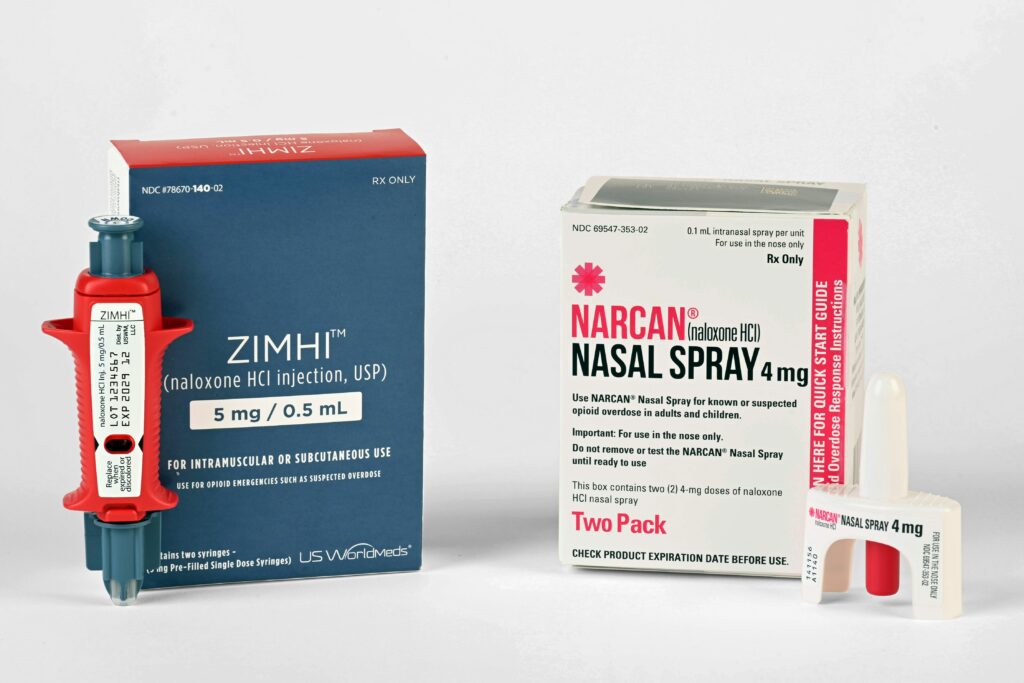Narcan saves lives, and the University of Mary Washington should make it more accessible to the community
4 min read
Naloxone can be administered as a nasal spray or with a needle. | Pharmacy Images, Unsplash
by MARTINA PUGH
Staff Writer
According to the Virginia Department of Health, in 2022 there were “22,398 drug overdose emergency department (ED) visits among Virginians, a 5% increase from 2021.”
These statistics come as a result of the opioid epidemic. Although students may not be directly affected by it, staying prepared is essential to keeping others safe.
Eagles in Recovery, a group designated as safe and supportive for students in recovery, helps to ensure students’ safety through their distribution of naloxone—often referred to by its brand name, Narcan—which is a medication that reverses the effects of an overdose on the brain by restoring the breathing of the victim.
“An opioid overdose is a potentially fatal situation, and it can happen to anyone given the prevalence of opioids in today’s society. Students, faculty and staff are at risk, and so are family members and other guests. It is easy to learn how to use naloxone/Narcan, and easy to carry it around in a backpack or a bookbag or to keep it in a desk, and it can save a life, buying time for an affected individual until a medical professional arrives,” said Raymond Tuttle, health promotion and student success specialist., and chair of Eagles in Recovery.
The group’s tabling events give students the opportunity to learn how to use Narcan and how to identify the signs of an overdose.
“I was trained on a whim. Last semester there were people on the first floor of the [University Center] that were doing training and I thought, ‘why not,’” said Jill Rosenquist, a sophomore environmental science major. ”I figured it would also be a good thing to put on my resume. At the end, they gave me a sticker that said I ‘just got naloxone trained’ and I stuck it to my computer where it still is today.”
Getting trained and having Narcan on hand is essential. Although groups such as Eagles in Recovery host tabling events throughout the semester, Narcan should be made more regularly accessible. Having a campus that gives students access to Narcan would decrease the likelihood of potentially fatal incidents occurring in a place where people may not otherwise understand how to help.
“It also helps to destigmatize the conversation around drugs and addiction because anyone could experience an opioid overdose, even through accidental exposure. If we teach people to perform first aid and CPR, then we should teach them to use Narcan. It’s just another form of first aid,” said Tuttle.
The destigmatization of opioid addiction, as opposed to merely suggesting against drug use, is not enough to prevent people from engaging in that behavior. This is why it is essential that people are informed about ways to be safe, as well as having open dialogues for people through their sobriety journey.
“Hopefully, Narcan coming to campus will bring more awareness towards fentanyl overdoses [and] at least encourage people to go out and explore and understand how dangerous fentanyl is and how you could potentially interact with it,” said freshman Maso Moses.
If the university is able to provide more Narcan for students, it will set a precedent about the importance of keeping students safe throughout their time at college beyond the classroom. It is the university’s responsibility to ensure that all students are provided safe care.
“I think that, over time, we are going to see all colleges making Narcan more accessible to individuals on their campuses,” said Tuttle. “That could mean training everyone to use it and giving them a kit, or making kits available in multiple locations all over campus. Many places make them available at the AED stations, and I think this is a great model. In general, it should be available 24/7 to anyone who needs it.”
Addiction is a cycle that is difficult to break and creating an environment that is more accepting of people who struggle is essential if we want to maintain people’s safety.
Acknowledging the dangers of addiction and creating a community where people do not feel isolated by their choices and feel safe to ask for help will promote a climate where people care for one another and do not need to have a developed relationship to provide help in an emergency.
The promotion of Narcan on campus will help to reduce the bystander effect which is often another aspect that prevents people from taking action, as they do not want to interfere or cause more damage.
Being thrust into a situation where a person’s life is at risk and those around have to take initiative in a timely manner is not easy, however, more people must understand that keeping people alive and taking action is always worth it.


